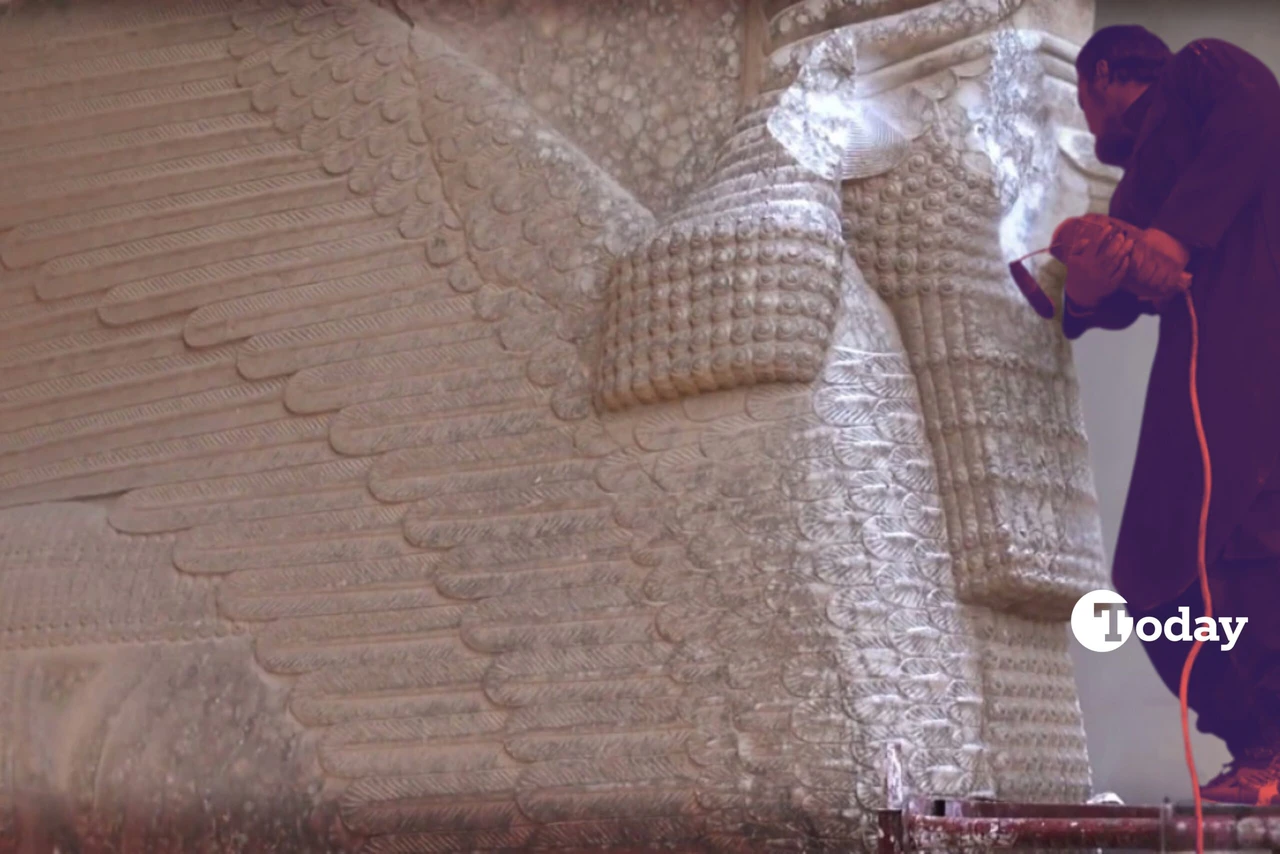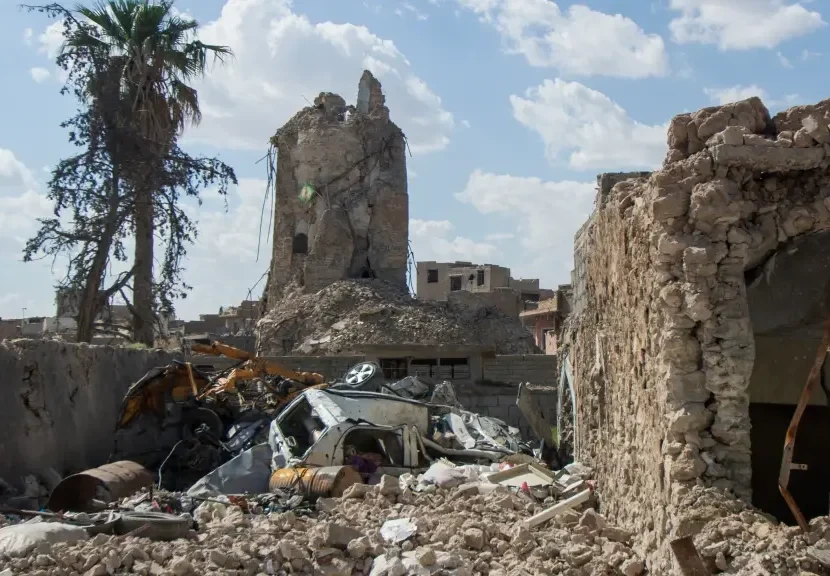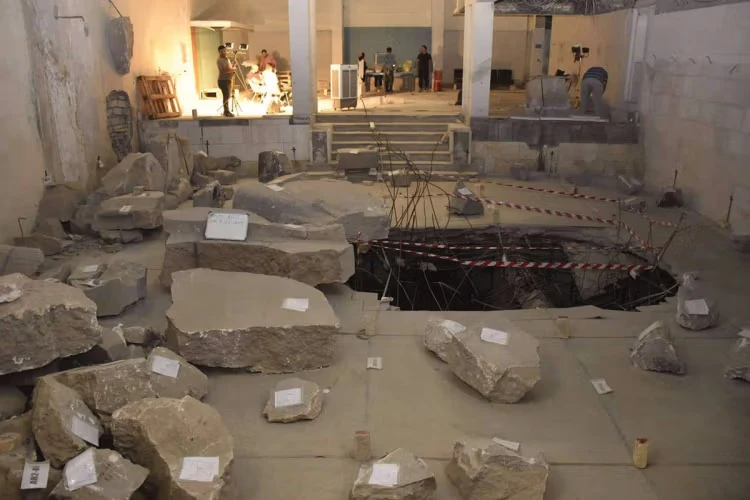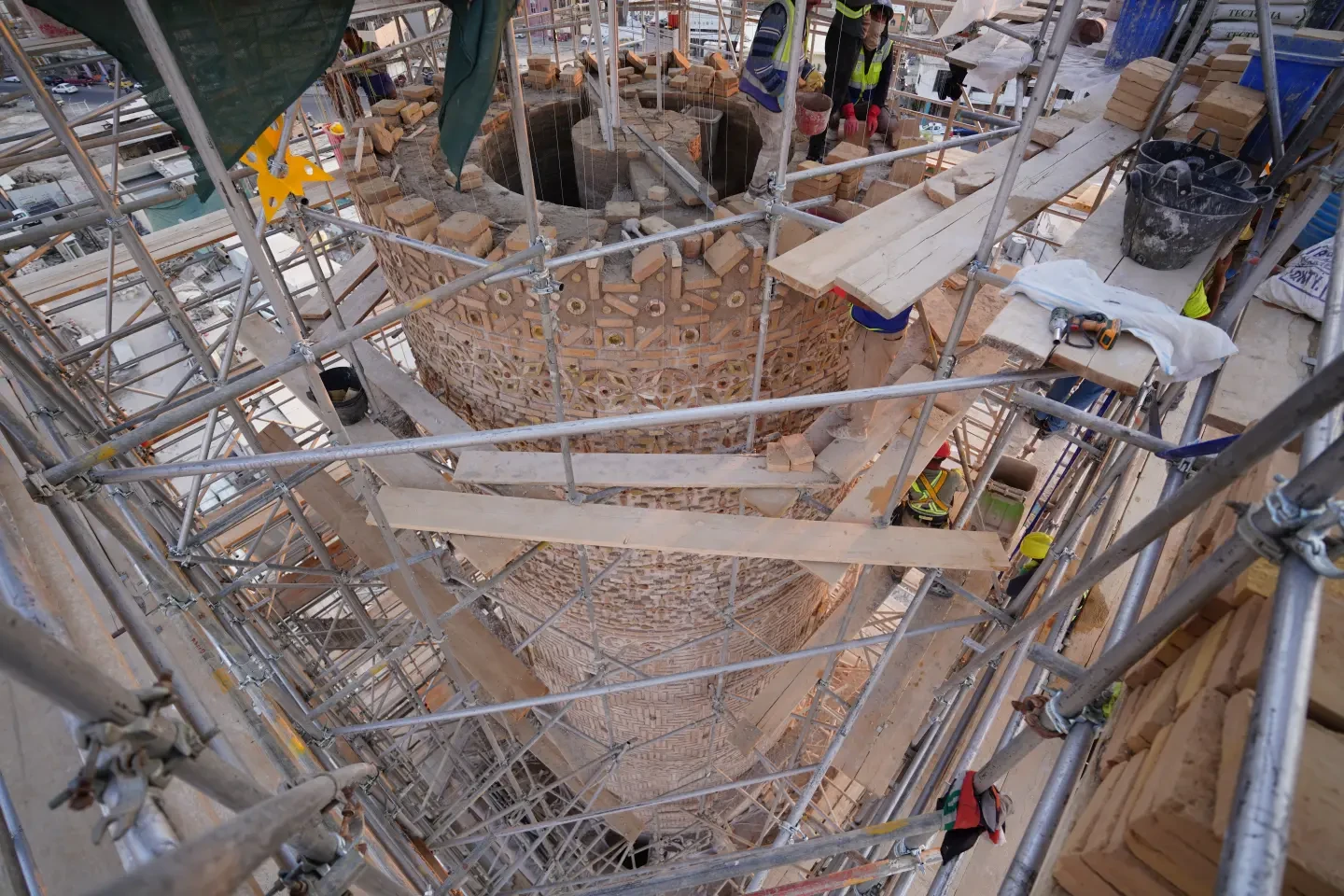10 years after Daesh’s destruction, Mosul’s heritage faces new era of reconstruction
 A Daesh militant uses a power tool to destroy an Assyrian winged bull at the Mosul Museum, Iraq. (Photo via YouTube)
A Daesh militant uses a power tool to destroy an Assyrian winged bull at the Mosul Museum, Iraq. (Photo via YouTube)
Ten years ago, the world witnessed a tragic moment as Daesh, a terrorist organization, filmed the destruction of priceless artifacts inside the Mosul Museum.
This was part of a broader campaign to erase Mosul’s rich cultural heritage, including the ancient city of Nimrud and the Great Mosque of al-Nuri.
Yet, despite the city’s scars, a vision for recovery and heritage restoration is emerging, guided by international efforts and local aspirations.
Mosul’s vision for heritage recovery
Since the destruction in 2015, the residents of Mosul have shown overwhelming support for heritage reconstruction. For many, restoring these historical sites is seen as a critical step toward peace and reconciliation.
A recent survey of 1,600 Mosul residents offers valuable insights into local attitudes. When asked to rank their top priorities for Iraq’s future, “safety and security” topped the list, followed by “unemployment and poverty.”
Only 16% of respondents identified “heritage protection and reconstruction” as a top priority.
Despite this, 99% of those surveyed agreed that heritage sites should be restored, underscoring the widespread belief in the importance of these efforts for Mosul’s future.

Heritage and peacebuilding
The role of heritage in promoting peace and rebuilding fractured communities was a key focus of the survey. An impressive 95 percent of respondents agreed that restoring Mosul’s heritage could foster positive relationships and promote peace, offering a unique opportunity to heal the city’s divisions.
While there is strong support for restoring Mosul’s damaged heritage, the survey revealed a preference for functional modernization over strict historical accuracy. Nearly half (48 percent) of the respondents expressed a desire for “modern and more useful” structures rather than solely focusing on historically accurate restorations.
This highlights a tension between preserving the authenticity of heritage sites and meeting the evolving needs of the community.

According to an analysis by Professor Benjamin Isakhan and Professor Lynn Meskell from the Australian Institute of International Affairs, the reconstruction of Mosul’s heritage is not just about restoring buildings but also about understanding the broader implications of rebuilding a city that has faced such devastation.
They emphasize that international efforts to restore cultural heritage must be sensitive to local contexts and guided by the needs and desires of the community.
Their research highlights the critical importance of local agencies in heritage reconstruction, where local residents must lead the way, with international organizations providing support rather than dictating the process.
Who should lead the reconstruction?
The survey also examined the preferences of Mosul residents regarding the leadership of reconstruction efforts. A clear preference emerged for Iraqi control, with 48 percent supporting the Iraqi government’s leadership.

Foreign actors such as UNESCO and international non-governmental organizations like the Smithsonian received much less support, with only a small portion of respondents favoring their involvement.
This reflects a desire for local leadership and ownership in the process of rebuilding Mosul’s heritage.
Lessons for international heritage reconstruction efforts
The implications of these findings extend beyond Mosul. In other post-conflict regions, such as Gaza, Syria, and Ukraine, international efforts must address both immediate recovery needs and long-term peacebuilding goals.
While heritage restoration is important, it should not overshadow essential needs, such as security, healthcare, and infrastructure.
The success of these projects hinges on finding a balance between historical accuracy and modern functionality. Heritage sites must be useful to the community, serving as living spaces that contribute to the daily lives of the people.
Additionally, international actors need to empower local communities, ensuring that reconstruction projects reflect local needs and aspirations.



